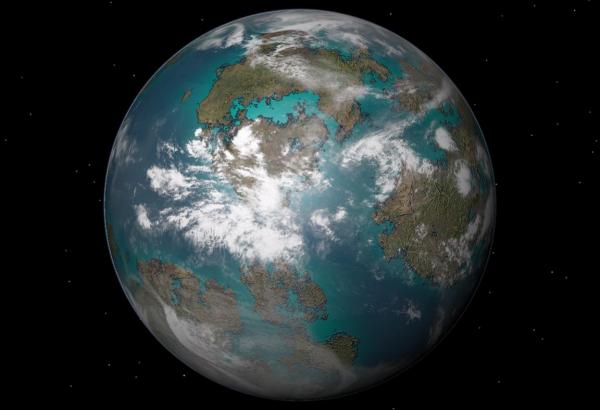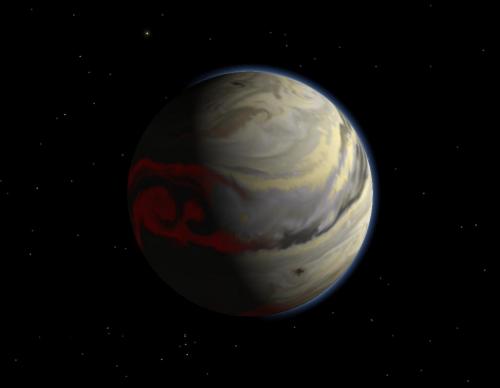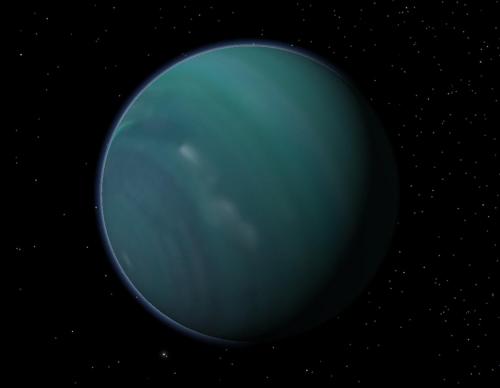BY LETTER
Oia (Here)
Culture and Society > Cultures and Sub-Cultures > Cyborgs
Galactography > Regions of Space > Middle Regions/Hinter-regions
Galactography > Sephirotic Empires > Non-Coercive Zone (NoCoZo)
Galactography > Sephirotic Empires > Sophic League
Galactography > Systems and Worlds > Systems & Worlds O - P
Galactography > Regions of Space > Middle Regions/Hinter-regions
Galactography > Sephirotic Empires > Non-Coercive Zone (NoCoZo)
Galactography > Sephirotic Empires > Sophic League
Galactography > Systems and Worlds > Systems & Worlds O - P
 Image from Steve Bowers | |
| Oia, a terraformed world at the edge of Sophic League space | |
Oia Data Panel | |
| Star: | YTS 23321-980-0071 (JD 788901101) |
|---|---|
| Class: | G8 |
| Luminosity: | 0.5 solar |
| Constellation: | Puppis, 2101 light years from Sol |
| Planets | Fira: 15000 km diameter Tidally locked gas dwarf; orbit 0.4 AU semimajor axis Oia (Here) 11009 km diameter eogaian class terrestrial- now terraformed; orbit 0.7 AU semimajor axis Irene 68000 km diameter cryojovian; orbit 4.8 AU semimajor axis |
| Affiliation: | Sophic League, later NoCoZo |
Colonisation
Oia was colonised by a long-range exploration mission in 5411 a.t by the Aphoxis cult of the Sophic League. As this system was relatively isolated in its early history, the terraformation process was achieved with modestly powerful equipment and took several centuries. During this time the colonist population lived in a series of space habitats orbiting above the planet. To work on the surface of the inhospitable world during this period, many adopted semi-artificial bodies resistant to the high temperatures and acidic clouds, effectively becoming cyborgs. When the surface workers returned to the shirtsleeve environments of the habitat they replaced their specialised bodyware for artificial but highly realistic, human seeming skins.Over time many of the nearbaseline population started to wear these realistic prosthetic bodies, which were generally easier to maintain than an organic body even with advanced medical technology. By the time Oia was declared fully terraformed, the great majority of the population had replaced their outer skins, muscles and bone structure with durable, reliable artificial substitutes. It was an ironic situation that the Oians had spent so long adapting this world to their biological requirements, but now it was finished the majority of the population had acquired bodies which could be easily adapted to the planets original state, making the terraforming process seemingly redundant
However the Oian morphological aesthetic at that time was firmly rooted in their perfect human-seeming bodies; nothing remained of their original form except the central nervous system, which required considerably less nourishment than a whole human body. This small amount of tissue still needed a supply of oxygen and fluid nutrients and waste elimination. For this reason the Oian cyborgs continued to breathe, eat and drink enough to satisfy those requirements, using prosthetic lungs and digestive systems. Other energy needs were supplied by electrical input and high energy chemical fuels
The artificial body designs the Oians used in the early years of the colony were capable of replicating the sensations of a normal but extremely fit) human body, and the external features were based on a (somewhat idealised) impression of the natural appearance of each individual simulated using the genetic material of the little tissue that remained within the shell.
Apart from the central nervous system, only the reproductive system retained some functional organs; the testes and ova were fertile, and fertilised eggs could be implanted in artificial wombs within the female cyborg and carried to term. During the gestation period the foetus was progressively replaced with artificial components, although full prosthesis did not occur until the child reached puberty. Some few individuals declined to subject their offspring to such tissue substitution, and the child was born with natural flesh; most such `nebbish' children (as they were known) voluntarily chose to become cyborged later in life.
The Oia colony became colloquially known as `Here', based on the pronunciation of the Anglic word for `This present location'.* The Oian colonists were somewhat isolated from the rest of Sophic society, in which the cyborg superphyle was not particularly common. For this reason the Oians began to refer to themselves as `Heretics from Here', only partly in jest.
Uglification
The Oian Heretics were proud to think of their world as a special place, a comfortable Earth-like world inhabited by idealised human specimens. But times and fashions change, and after several centuries of synthetic perfection some began to adopt a less-than- perfect appearance; the new style rapidly caught on. And after a short period realistically plain, or even ugly, cyborgs began to make their appearance. By 6300 the great majority of the population had made themselves aesthetically imperfect in some way, some were even deformed or frighteningly hideous. This fashion for the unsightly became known as Uglification.Morphological Diversity
A troop of "Humanologists", provolved apes from Ao Lai, came to Oia in the post-ComEmp period to study the planet's cult of imperfection . They were intrigued and baffled by the rapid changes in the physical appearance of the Heretics; but perhaps more importantly, the apes themselves became the focus of fascination within Oian society. Soon some Oians remodeled their prosthetic flesh and bone structure to resemble provolved apes of various kinds. This signaled the start of a period of great morphological freedom; cyborg bodies modeled on provolved elephants, lions and tigers, antelope, whales and dolphins appeared. By 7500 even more radical bodyforms were appearing- retromorphs based on the semimetallic bodies used by ancient cyborgs of legend and fiction, non-humanoid vec-like bodies and even alien morphs based on To'ul'h or Ultimate bodyforms (note: these two species were among the few xenosophonts which had been contacted in this timeframe).The Transcension of the Concerted Minds
Perhaps the most dramatic development at that time was the emergence of the Concerted Minds, large immobile structures dotted around the world, which contained hundreds, or thousands, of linked individuals who existed as nervous tissue and life support systems only. These Concerts ascended one by one to the First Singularity level, then began to increase in processing power by self-modification and augmentation until they transcended to a higher transapient level and withdrew entirely from Oian society. Many of these structures remain on the Oian surface, although a large number of the transcended entities migrated off planet over the next two millennia and few are still active on this world.In recent decades the population has generally reverted to a more conservative appearance, recalling the early years of synthetic human perfection. In part this is because a considerable amount of immigration has occurred in the modern era, bringing a new population of individuals (mostly from the nearby NoCoZo and Seams systems) who often choose to adopt the values and fashions of a distant and romantic age before the chaotic period of morphological diversity and uglification. One clade which has formed strong links with Oia is the Derlekians, another cyborg race who use synano to change their appearance at will. The Derlekians emerged separately from the Oian cyborgs, but have many similarities in outlook- this seems to be no more than convergence as the two factions have only recently made contact.
*Note on pronunciation; The phrase 'Heretics from Here' in the form of Anglic spoken by the Oian cyborgs would have been something like 'Oiaretikas frame Oiar', which sounds even more like the name of that planet.
 Image from Steve Bowers |
 Image from Steve Bowers |
Related Articles
Appears in Topics
Development Notes
Text by Steve Bowers
Initially published on 28 November 2007.
Initially published on 28 November 2007.






